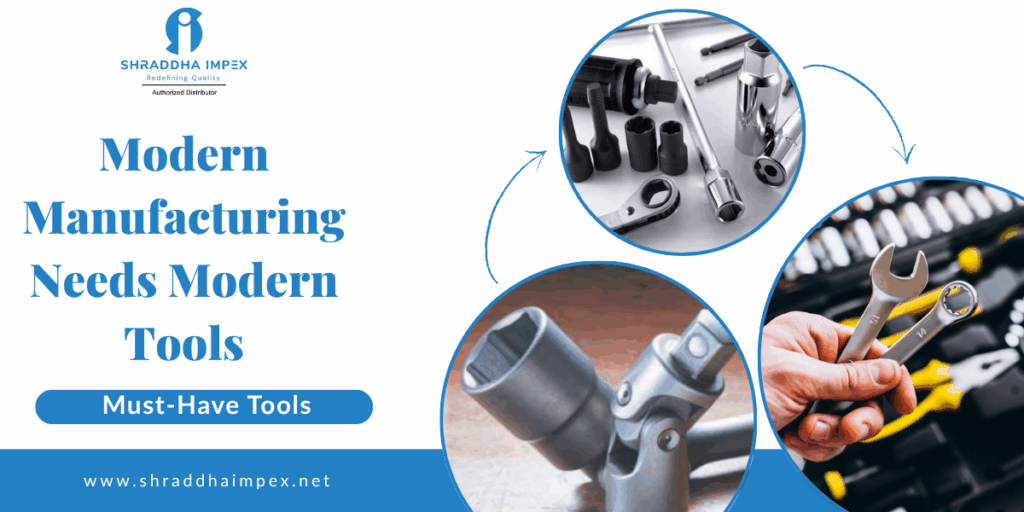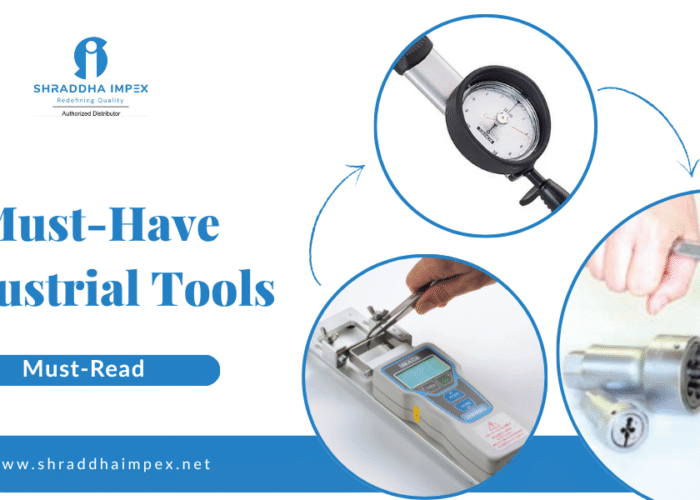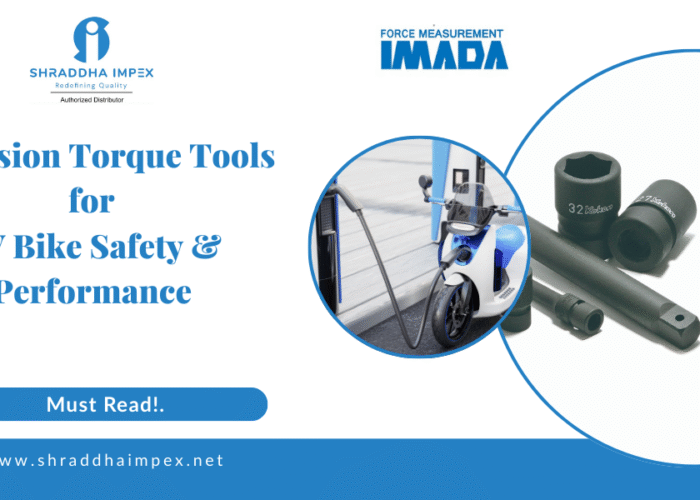Efficient manufacturing depends on having the right set of industrial tools. Whether you run a small shop or a large plant, equipping your unit with reliable and precise instruments can enhance safety, quality, and productivity. In this guide, you’ll find ten essential tools—ranging from torque tools to force gauges—that every contemporary manufacturing setting needs. Each section explains why the tool matters and offers tips on making the most of it in your daily operations.
Enhanced Efficiency Starts Here
In today’s competitive landscape, modern manufacturing demands accuracy and speed. By integrating high-quality tools—from a simple screwdriver to advanced force-measuring devices—you’ll streamline processes and reduce costly errors. Let’s explore each must-have item and how it fits into your workflow.

1. Precision Torque Wrench
A torque wrench is key for applying exact rotational force to fasteners. Over- or under-tightening bolts can lead to equipment failure or safety hazards. You need a torque tool calibrated to your specifications. Brands like Koken offer durable torque wrenches with adjustable ranges, ensuring you hit the exact setting every time.
- Why it matters: Consistent bolt tension prevents leaks, misalignment, and wear.
- How to use it: Always follow the bolt manufacturer’s torque specifications. Slowly apply force until you hear or feel the click.
- Maintenance tip: Regularly verify calibration against a certified standard to maintain accuracy.
2. Digital Force Gauge
Measuring tension and compression accurately is vital in quality checks. A digital force gauge tells you the exact force applied to parts, springs, or materials. Leading makers like Imada provide gauges with high-resolution displays and data logging features.
- Why it matters: You can quickly catch material defects or process deviations before final assembly.
- How to use it: Position the gauge firmly against the test specimen, zero the display, and apply force at a steady rate. Record peak values for analysis.
- Maintenance tip: Store in a protective case and recalibrate annually to prevent drift in readings.
3. High-Quality Screwdriver Set
Screwdrivers are basic yet indispensable tools in any manufacturing environment. Whether you’re assembling electronic components or adjusting machinery guards, a set with various tip styles and sizes keeps you prepared. Look for industrial-grade sets with magnetic tips and ergonomic handles to reduce fatigue.
- Why it matters: Proper fit prevents cam-out and damage to screw heads or workpieces.
- How to use it: Match the tip exactly to the screw head type—Phillips, slotted, Torx, or hex—to ensure torque is transferred correctly.
- Maintenance tip: Clean tips regularly and replace worn bits to maintain grip.
4. Impact Sockets
When you need high torque delivery—such as removing stubborn bolts—impact sockets outperform regular sockets. Made from alloy steel, these sockets resist cracking under repeated heavy impacts.
- Why it matters: You’ll avoid broken sockets and stripped fasteners when using pneumatic or electric impact wrenches.
- How to use it: Pair impact sockets with an impact wrench set to the correct torque or pneumatic pressure. Always wear safety glasses.
- Maintenance tip: Inspect sockets for hairline cracks and replace any that show damage to prevent sudden failures.
5. Automated Calibration Equipment
Calibration machines automate the verification of your critical instruments—such as torque wrenches and force gauges—ensuring they perform within tolerance. Investing in an in-house calibration rig saves time compared to outsourcing.
- Why it matters: Regular calibration keeps all your tools authoritative, reducing downtime from tool failure.
- How to use it: Schedule routine checks—monthly or quarterly—based on your production volume and quality standards.
- Maintenance tip: Keep a digital calibration log to track tool performance and identify trends before issues arise.
6. Surface Roughness Tester
For parts that must meet strict bearing or seal requirements, surface finish is critical. A surface roughness tester measures micro-scale peaks and valleys, ensuring your machining processes deliver the right texture.
- Why it matters: Improper surface finish can lead to leaks, poor adhesion, or premature wear.
- How to use it: Place the stylus on the test surface, start the measurement, and compare readings against your design specifications.
- Maintenance tip: Clean the stylus and test surface to avoid debris affecting measurements.
7. Laser Measurement Tools
Fast, non-contact, and highly accurate, laser distance meters and scanners speed up layout work and quality inspections. You can map large assemblies or verify dimensions without touching the workpiece.
- Why it matters: Minimizing human error accelerates the setup and inspection phases.
- How to use it: Aim the laser at a reflective target or surface, lock in the distance, and record data. Many units integrate with CAD software.
- Maintenance tip: Keep lenses clean and avoid dropping the device to maintain beam alignment.
8. Hydraulic Pullers and Presses
Removing bearings, gears, or pressed-in shafts can damage components if you rely solely on manual pullers. Hydraulic pullers and presses apply smooth, controllable force to disassemble or assemble tight-fitting parts.
- Why it matters: You protect both the tool and your components, reducing scrap rates.
- How to use it: Position the puller arms or press plates evenly, apply hydraulic pressure slowly, and monitor for any signs of misalignment.
- Maintenance tip: Check hoses and seals for leaks; maintain proper hydraulic fluid levels.
9. Pneumatic Assembly Tools
Air-powered screwdrivers, nut runners, and rivet guns combine speed with consistent torque delivery. Pneumatic devices reduce operator fatigue and increase throughput on repetitive fastening tasks.
- Why it matters: High-volume assembly lines benefit from standardized fastening cycles and reduced manual strain.
- How to use it: Regulate air pressure to match the tool’s rating, and use torque-limiting attachments when precise torque is required.
- Maintenance tip: Install inline filters and lubricators to keep moisture and debris out of the tool’s pneumatic system.
Equip Your Unit for Success
By selecting these top ten tools—ranging from simple screwdrivers to advanced force gauges made by Imada—you build a strong foundation for reliable manufacturing operations. Remember:
- Accuracy: Regular calibration and maintenance keep your measurements on point.
- Safety: Using the right tool cuts down on workplace incidents.
- Productivity: High-quality industrial tools minimize downtime and boost output.
Investing in precision torque tools, force gauges, impact sockets, and other essential equipment isn’t just a line-item expense; it’s a decision that protects your reputation and drives growth. Equip your manufacturing unit wisely, and you’ll see the benefits in every finished product.
Looking for trusted industrial tools? Shraddha Impex offers a curated range of globally recognized brands to meet your precision needs.


